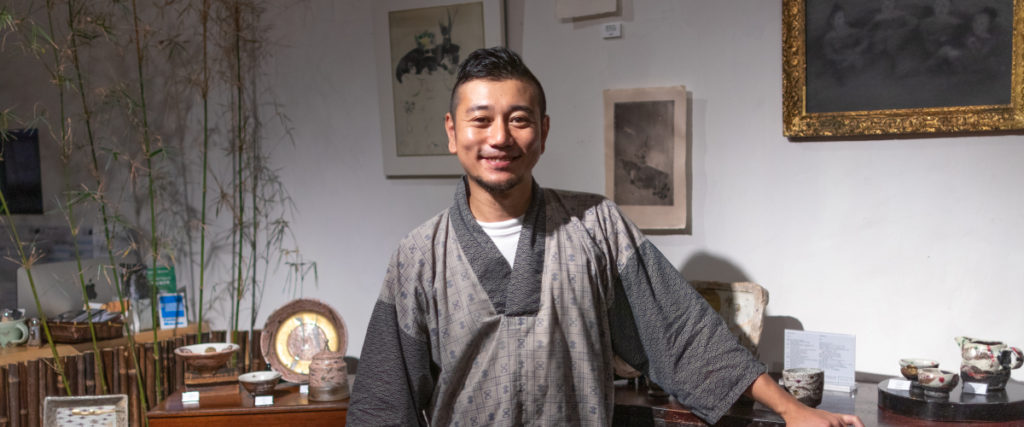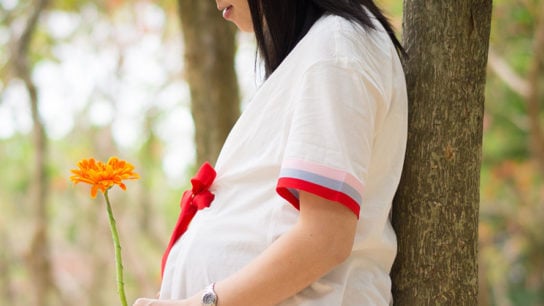Dating back to the 14th century, kintsugi, the ancient Japanese art of repairing ceramics with lacquer and gold, is a delicate, time-intensive process. We sat down with kintsugi practitioner Josuke Kita to find out more.
At his regular kintsugi workshops held at Hong Kong’s cultural hub PMQ, Josuke Kita is breathing new life into broken pieces. Holding an intricate sake cup in his hands, he reveals a fine spider web of gold veins etched across its inner rim. The hallmarks of his craft, they are the precious scars of an accident now healed and the result of painstaking hours of kintsugi, an ancient Japanese method of repairing porcelain that seeks to celebrate an object’s history by beautifying its former breaks.
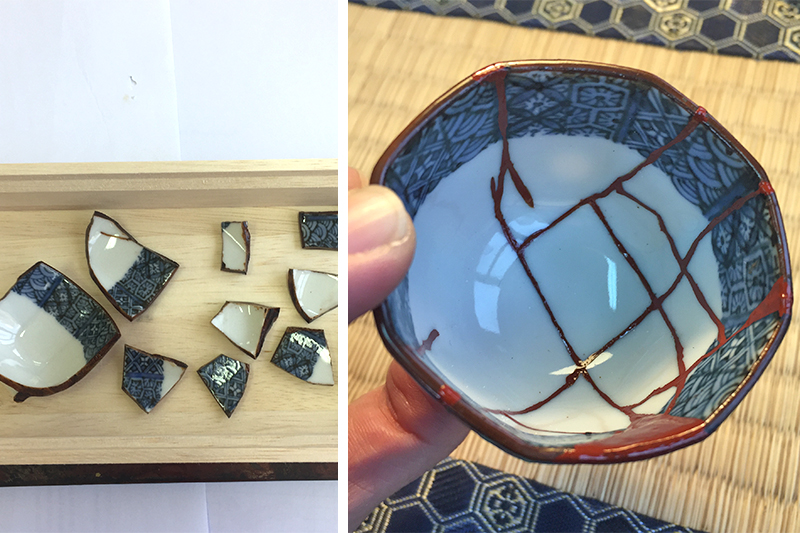
A specialist in the ancient Japanese art of kintsugi, Josuke’s days are spent dedicated to this traditional Japanese repair method dating back to the Muromachi period. Using lacquer and powdered metals to mend chips and breaks in cups and plates, “Kintsugi has three methods,” he explains. “Simplified, semi-simplified, and traditional kintsugi.” At its most basic level, simplified kintsugi uses epoxy, a resin-based glue, to bind the pieces together. While this is much quicker, epoxy is not 100% food-safe. Semi-simplified kintsugi, the next step up, combines modern glues with historic practices, covering this epoxy layer with lacquer, a resistant non-reactive finish derived from poison oak trees. Finally, traditional kintsugi employs all natural materials, such as lacquer, stone powder, rice powder, flour, and gold and silver. Taking a month or more per piece, this is a much more labour-intensive form of the craft.
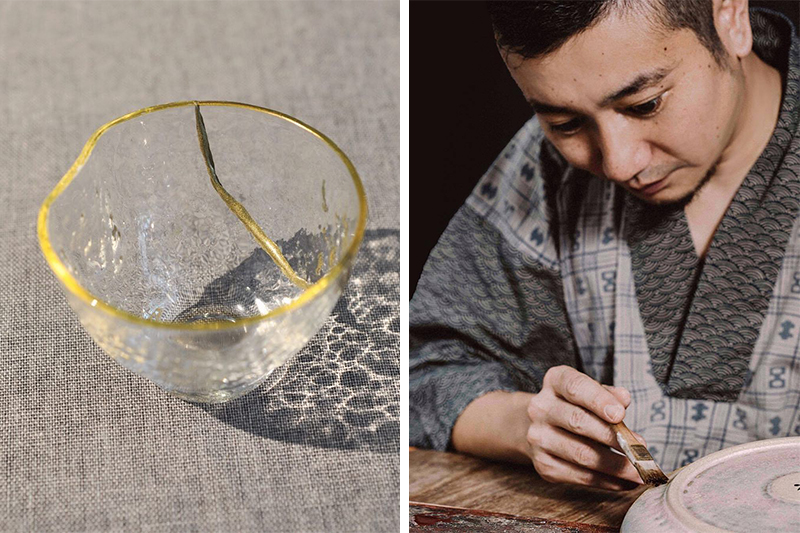
Josuke first began kintsugi four years ago. Importing ceramics from Japan as the manager of dinnerware supplier Yamaguchi Ceramics, he recalls, “With every shipment, some pieces would always be broken. I felt it was a waste because those plates had never been used.” Working on up to 20 pieces at a time, kintsugi allows him to take care of his work and provide an after-sales service. “Almost all of my kintsugi customers are happy once they see the finished product,” Josuke relates. “So that makes me happy too.”
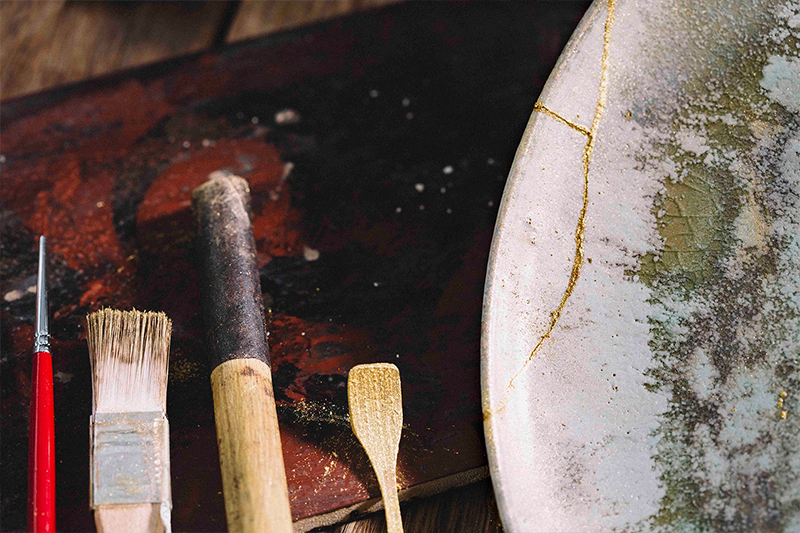
Integrating precious metals, kintsugi is a repair method that actually enhances the value of a piece. Brass, tin and silver powder are options for more budget-conscious customers, but many of Josuke’s customers opt for 24k gold, which can incur a cost of HKD 500 to 600 for even the smallest chip. With an international clientele that comes to his workshops, plans to travel the world repairing pieces as he goes and evidence of an upswing in the use of kintsugi once again back in Japan, he sees a valid space for this ancient craft in today’s fast-paced world. Perhaps that’s because, sometimes, sentimental value takes precedence over cost. “One of my customers asked me to fix a piece because her father used to use it,” he recounts. “It’s not about how expensive a piece is. It’s the memories that people are preserving.”
Related Articles
The Woman Revitalising Australia’s Art Scene With Her All-Women Art Gallery
Art with Stephanie Kelly, Director of Affordable Art Fair
ColourSpace: The Social Enterprise Transforming Australia’s Offices into Art Galleries
